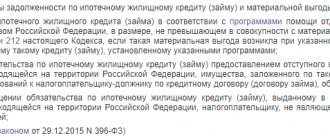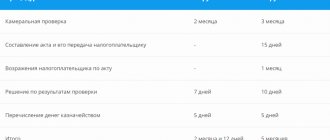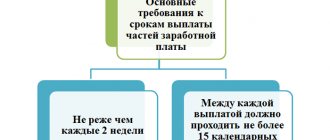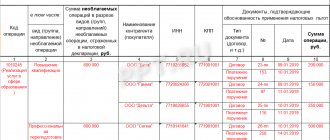Individual entrepreneurs and organizations using the simplified tax system do not pay VAT. But there are exceptions to this rule, when VAT still needs to be transferred to the budget. In such cases, it is necessary to determine the VAT compensation yourself and reflect it in the documents in a special way. Leader Marat Samitov explained how to do this.
Despite the fact that organizations and individual entrepreneurs using the simplified tax system generally do not pay VAT to the budget, there are situations when they need to calculate this tax. For example, this applies to those simplified workers who participate in the implementation of government orders, as well as if they work with contractors under the general regime under construction contracts. In these cases, it is necessary to determine the VAT compensation yourself and reflect it in the documents in a special way.
VAT compensation when simplified in the estimate
Reimbursement of VAT under the simplified tax system in estimates in 2021, as well as in 2020, is a pressing issue when drawing up estimate documentation.
And although VAT compensation in the estimate under the simplified system is most often part of accounting reports and other sets of documents submitted to regulatory authorities, VAT in the estimate under the simplified tax system must also be reflected by specialists from the estimate department. It should be noted that the simplified taxation system implies the absence of payment of value added tax in most cases.
However, there are also cases when a construction company using the simplified tax system still has to deal with this tax. Therefore, logical questions arise: how to recalculate the estimate from VAT to “simplified” and how to refund VAT in the estimate under the simplified tax system.
When will a simplifier need to calculate VAT?
The circumstances in which individual entrepreneurs or organizations need to charge VAT on the simplified tax system include:
- import of goods into the territory of the Russian Federation, tax is calculated on the amount of import, taking into account import duties; as sales are carried out, they accrue and pay the tax (clause 3 of Article 346.11 of the Tax Code of the Russian Federation).
- work of the simplified tax system payer under a trust management agreement (DMA) or a simple and investment partnership, if the other party to the agreement is a partner applying the OSNO (Article 174.1 of the Tax Code of the Russian Federation).
- making a purchase or leasing municipal property, in this case the simplifier pays VAT as a tax agent (clause 3 of Article 161 of the Tax Code of the Russian Federation).
- voluntary issuance of documents for the buyer with the allocation of VAT, which entails the need to submit a declaration to the Federal Tax Service and pay tax to the budget (clause 5 of Article 173 of the Tax Code of the Russian Federation).
Cases of VAT compensation in estimates
It should be noted that when working on a simplified taxation system, an entrepreneur or construction company is exempt from paying a number of taxes and contributions. Value added tax, or VAT, is one of them. However, this fact also deprives taxpayers in this taxation system of receiving a VAT refund under the simplified tax system in the estimate.
It should also be noted that since 2021, the amount of VAT tax has increased significantly, and today it is 20%. In this regard, when the question arises of how the simplified tax system is taken into account in the estimate, it is also important to understand how to reimburse VAT costs using the simplified tax system in the estimate.
After all, a construction organization operating in a simplified mode often encounters estimates in Form No. 4, local resource estimates, object estimates, summary estimates and other forms of estimate documentation, which indicate the cost item for VAT payment.
In addition, when purchasing materials and repairing machinery and equipment, the organization also pays the specified tax. Therefore, the issue of registering the simplified tax system in the estimate sometimes arises very acutely. After all, what is interesting in this case is the method of how to return the paid VAT and how the application of the simplified tax system refund can be taken into account in the estimate.
In various regulatory documents on VAT reimbursement under the simplified tax system, the estimate pays attention to various cases where such a need arises. In addition, many training courses and lectures, as well as various forums and seminars, are devoted to this topic. In addition, it should be borne in mind that the preparation of estimates under the simplified taxation system of the simplified tax system has been updated for 2021 and must be carried out taking into account all current regulations and acts.
Who can return VAT
Typically, tax payers - individual entrepreneurs and legal entities - receive a tax deduction. Ordinary citizens, contrary to assurances in some media and on Internet sites, do not have such a right. The Tax Code of the Russian Federation does not provide for VAT refunds for individuals on a card or in any other way, if such people are citizens of Russia. And there are no exceptions to this rule. It is impossible to return VAT to an individual’s card for money or free of charge; the Federal Tax Service of Russia simply does not provide such a service. Therefore, all the instructions on the Internet on how to return VAT to your card legally and safely are traps for gullible citizens whom scammers want to deceive. You should not transfer money to them. You will definitely not receive any real refunds in return for payments made to the budget. But there is still one way to return VAT to an individual.
Formula for VAT compensation under the simplified tax system in the estimate
The formula for VAT compensation under the simplified tax system in the estimate in the letter of the State Construction Committee No. NZ-6292/10 dated October 6, 2003 is the main formula today. Although it should be noted that there is some uncertainty in resolving this issue.
This uncertainty is due to the fact that the simplified tax system formula in the estimate and, in addition, the theses concerning the determination of the cost of overhead costs and estimated profit in estimates in “simplified” terms were recommended by different regulatory documents, sometimes somewhat contradictory to each other. Therefore, what formula for calculating 20% VAT compensation in the estimate will be applied should be clarified not only by the text of the contract for the construction project, but also by the current regional regulatory documents.
So, returning to the text of letter No. NZ-6292/10 dated October 6, 2003, several directions can be highlighted. The first of these is the simplified tax system formula for the estimate. It should also be clarified that there is no formula as such in the letter, however, the appendix to the letter provides an example of a calculation that will allow you to understand how the simplified tax system is taken into account in the estimate.
The essence of the simplified tax system
A large number of enterprises, including those in the construction industry, operate under the simplified taxation system (STS). The beauty of working under the simplified tax system is that an enterprise or individual entrepreneur can replace several taxes with one. This is done, as the name suggests, to simplify the accounting and tax accounting of small businesses. At the same time, in contrast to the general tax system ( OSNO ), an enterprise or entrepreneur working under the simplified tax system applies VAT on the goods it purchases and.
Attention! Letter of the State Construction Committee No. 2536-IP/12/GS dated November 27, 2012 was recognized as not subject to application from July 24, 2018. Applying coefficients to HP and SP should be agreed upon with the customer!
The simplified tax system itself exists in two versions, in which the amount of tax is determined, respectively, as:
(Income - Expenses) x 15%
or
Income x 6%
Formula for VAT compensation under the simplified tax system in the estimate. Counting example
If you look at Figure 1, you can see an example of calculating VAT under the simplified tax system in estimates in 2021, as well as in the year 2021. This calculation is based on the example from the attachment of the above letter.
Figure 1. Example of calculating VAT compensation in estimates for the simplified tax system
As you can see, the calculation has three columns, each of which indicates the necessary data for calculating a sample estimate without VAT under the simplified tax system. The first column indicates cost items. According to the methodological document in construction MDS81-35.2004, the items of estimated costs include the following categories: the cost of materials, operation of machines and mechanisms, as well as the cost of the wage fund (WF), which constitute direct costs in the estimate. The wage fund is the summation of workers' wages and drivers' wages.
Plus, as part of the estimate forms, there are enlarged standards for overhead costs (OS) and estimated profit (SP), which are also components of the estimated cost items. By the way, letters from the State Construction Committee and the Ministry of Justice also recommend reducing coefficients for the norms of NR and SP under the simplified tax system, which will be discussed further in the text.
In addition to those listed above, the cost of paying taxes is included in the estimate form, and various limited costs, costs for unforeseen expenses, etc. can also be listed.
However, the purpose of the simplified tax system in the estimate is that, as noted above, many taxes cannot and should not be reflected in the estimate form due to the tax regime. Therefore, for taxes such as VAT on materials under the simplified tax system in the estimate, a calculation is provided similar to that illustrated in Figure 1. Thus, it becomes clear how each of the cost items in the first column of the calculation is deciphered in the estimates of the simplified tax system.
The second column in the example of calculating the simplified tax system in the estimate contains the spontaneous cost of work, which is measured in thousands of rubles. And in the third column, calculations are made for reimbursement of VAT costs under the simplified tax system in the estimate. For convenience, all simplified taxation formulas in the estimate in Figure 1 are described in detail, however, in a real estimate they can be indicated immediately in the totals.
So, in order to calculate the amount of VAT compensation under the simplified tax system in the estimate, you should first find out the amount of value added tax for each cost item. So, if you turn to the line “Materials”, the amount of which, indicated in the second column, is equal to 5000 thousand rubles, you can calculate the amount of VAT in the amount of 20% in the following way: 5000 multiplied by 20%. The result is 1000 thousand rubles.
Workers' wages remain unchanged, since VAT is not paid on them. But regarding the costs of operating machines, the same principle applies as when calculating VAT in estimates under the simplified tax system for materials.
However, it should be taken into account that the operation of machines must be taken into account in this calculation in its pure form, that is, without the cost of machine operators’ salaries. Therefore, the simplified tax system formula in the estimate in this line is given as follows: the driver’s salary “350” is deducted from the amount of operation of machines “1800”. Next, an identical calculation is made, that is, the amount of VAT is calculated. In this case it is 290 thousand rubles.
The “Total” line shows the amount of VAT on materials and mechanisms, which is taken into account in the simplified tax system estimate: 1000+290 =1290.
The next step in calculating VAT compensation in the estimate is calculating the tax as part of overhead costs and estimated profit. Since HP and joint venture in the estimate are calculated on the basis of payroll, calculations will be made from the sum of the salaries of workers and drivers, that is, from 1900 + 350 = 2250 thousand rubles.
As you can see, coefficients of 1.18 and 0.7 are also applied to the overhead cost indicators in the estimate. The coefficient of 1.18 is included in the calculation based on Appendix 2 of MDS 81-4.99 and is an aggregated standard in housing and civil construction for this type of standard. Also, the simplified tax system formula in the estimate in the HP part contains a reduction factor of 0.7, which will be discussed further in the text in the corresponding paragraph.
Thus, it turns out that the amount of overhead costs for calculating the VAT refund under the simplified tax system in the estimate in Figure 1 is 1858.5 thousand rubles. To this amount, an indicator of the specific weight of materials costs in the amount of 0.183 is applied, and the amount of VAT of 20% is also calculated.
In relation to the estimated profit indicator, similar calculations are made for reimbursement of VAT costs under the simplified tax system in the estimate. However, the aggregated standard indicator is excluded from the formula. Instead, the calculations must include the industry-wide SP standard, applied on the basis of MDS81-25.2001. In addition, the specific gravity of materials for the estimated profit is 0.15 and must also be taken into account in the final calculation.
After making all the calculations, you need to display the total amount for all lines. In the example in Figure 1, this is 1397.57 thousand rubles. Thus, VAT compensation under the simplified tax system in the estimate in this case will be 11.43%.
Answers to frequently asked questions on the topic
In the process of VAT refund, individual entrepreneurs and organizations often have questions that are of a typical nature.
Question 1.
Can an individual apply for a VAT refund?
Answer 2.
VAT refunds are available to tax payers, or rather individual entrepreneurs, organizations, as well as persons involved in the export of goods. An ordinary person who is not involved in the sale of products, goods, services and who is not a VAT payer by definition, does not have the opportunity to return VAT.
Question 2.
How long after the audit will the funds as a VAT refund arrive in the current account?
Answer 2.
In accordance with current legislation, VAT refunds occur no later than 12 days after the desk audit.
Alternative formula for VAT compensation under the simplified tax system in the estimate
Many sources devoted to the subject of estimates also indicate another simplified tax system formula in the estimate. Figure 2 shows this calculation method. However, it should be noted that the choice of the formula for calculating 20% VAT compensation in the estimate should be carried out strictly with the agreement of each type of calculation by all legally interested parties in the construction work.
Figure 2. VAT compensation formula
Thus, the calculation algorithm in Figure 2 has similar features to the calculation example from the letter of the State Construction Committee No. NZ-6292/10 dated October 6, 2003, shown in Figure 1. That is, the calculations are made using the same parameters from the estimate form: cost of materials , mechanisms, as well as remuneration.
However, you can note that in the given formula for VAT compensation under the simplified tax system in the estimate, slightly different indicators are applied to the NR and SP standards. The coefficient of the specific weight of costs for materials from MDS81-33.2004 is applied to overhead costs, the same indicator is taken into account for the estimated profit.
Many experts prefer this formula for VAT reimbursement under the simplified tax system in the estimate, and not from the letter from the State Committee for Construction. However, as noted above, this method must be approved and agreed upon by the competent authorities.
In addition, economic calculations of this type can be carried out in various estimation programs. For example, you can compensate for VAT under the simplified tax system in the “Grand Estimate”. The simplified tax system formula in the “Grand Estimate” is entered using the same algorithms as other formulas in the specified software package, so this action should not cause difficulties.
VAT refund procedure: stages
VAT refund occurs as follows:
- documents are submitted to the Federal Tax Service;
- the fiscal authority checks the papers;
- a decision is made;
- money is returned.
Stage No. 1. If the amount of tax deductions is greater than the VAT payable, a tax refund application is submitted. The following documents will be required:
- Handwritten statement.
- Declaration indicating the amount of return.
Stage No. 2. After submitting the application, tax specialists conduct an audit. At this time, additional documents may be needed: acts, invoices, contracts. If there are no violations, the tax service makes a decision within a week.
Stage No. 3. After receiving the notification, the Federal Tax Service confirms the right to receive a full or partial VAT refund.
Stage No. 4. If a positive decision is made, funds are credited to the company's account. This happens within 24 hours after the decision to return is made.
On video: Calculation of VAT in Kazakhstan
Resolution of the Court of Justice of the West Siberian District dated March 10, 2020 in case No. A45-20899/2019
Payment under the contract cannot be reduced due to the contractor’s transition to the simplified tax system. The parties entered into a contract for the maintenance of roads with a monthly payment. The contract price was determined including VAT. During the execution of the contract, the customer began to reduce the funds transferred to the contractor by the amount of VAT. The courts of three instances declared the customer’s actions illegal. Referring to the practice of the Supreme Court, they recalled: neither during the conclusion nor during the execution of a contract its price can change due to the taxation system that the contractor applies (or has begun to apply).
Pros and cons of VAT for individual entrepreneurs
Working with VAT allows you to subsequently issue a deduction. By paying this tax, the supplier will be able to find more serious clients who also pay VAT and receive a deduction, acting as a buyer. Many people believe that it is difficult to achieve VAT payment, since you need to maintain income, expenses, receive an invoice and support it with reporting papers. However, reporting is not difficult. In this case, you can use the services of an accountant. It is important to adhere to deadlines to avoid paying fines later.








